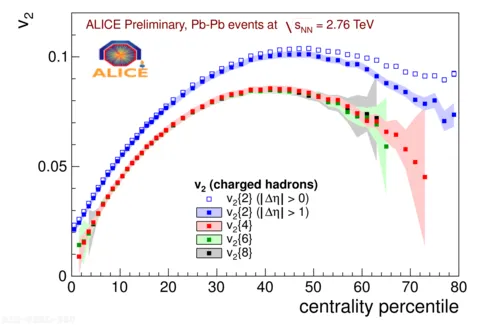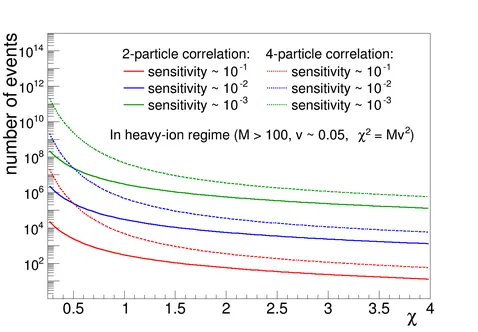ERC StG: Demystifying the Quark-Gluon Plasma with anisotropic flow

It is believed that the Quark-Gluon Plasma existed a few microseconds after the Big Bang.This state of matter consists of deconfined quarks and gluons, interacting dominantly via the strong nuclear force, one of the four fundamental forces in nature.
The Quark-Gluon Plasma does not exist at ordinary temperatures and energy densities, where the building blocks of matter are composite particles, baryons (made up of three quarks) and mesons (made up of one quark and one antiquark).
Closely related with this is the so-called asymptotic freedom, which states that quarks interact weakly at large energies (or, equivalently, at short distances). As the distance between quarks in composite particles increases, their interaction energy increases as well, which prevents the quarks from being separated.
In collisions of heavy ions at the Large Hadron Collider the Quark-Gluon Plasma can be produced. Therefore, by producing and studying the properties of Quark-Gluon Plasma in heavy-ion collisions at the Large Hadron Collider we are essentially recreating and studying the conditions which existed in the distant past of our universe and shedding light on its evolution.
Anisotropic flow, which measures the momentum anisotropy of final-state particles, is sensitive on the one hand to the initial density and to the initial geometry fluctuations of the overlap region, and on the other hand to the transport properties of the QGP. Anisotropic flow measurements in heavy collisions have demonstrated that the QGP produced at the Large Hadron Collider is one of the best examples of a perfect fluid, i.e. the ratio of its shear viscosity to entropy density (η/s) is very close to a universal lower bound of 1/4π which is obtained from theoretical arguments based on the AdS/CFT conjecture, the fundamental duality between general relativity and conformal field theory.
The recent flow measurements with multi-particle correlations in the proton-proton collisions, and in collisions of light and heavy nuclei, like proton-lead (p-Pb) at Large Hadron Collider, or proton-gold (p-Au) and deuteron-gold (d-Au) at Relativistic Heavy Ion Collider, have flared a lot of discussions, both among theorists and experimentalists. Since to leading order these measurements resemble the features observed in the heavy-ion collisions, which are attributed to collective anisotropic flow, it is very tempting to interpret them the same way for smaller systems. Therefore, it is very important to scrutinize the collisions of smaller systems in order to determine the onset of Quark-Gluon Plasma formation, as a function of system size and energy. These measurements will either confirm or disprove the long standing question of whether the Quark-Gluon Plasma can be also produced in the collisions of small systems, and their outcome will depict the quantitative details of only approximately known boundary between the phases of ordinary nuclear matter and Quark-Gluon Plasma phase in the nuclear phase diagram.

Even though multiparticle correlation techniques are nowadays utilized regularly by all major collaborations worldwide which are analyzing high-energy nuclear collisions, very little is known about their statistical properties beyond their first moments. The derivation of higher order moments and the derivation of the analytic expressions for the probability density functions (p.d.f.s) of multiparticle correlations remain a very important open problem, from a purely mathematical point of view.
For more informations contact the group leader Dr. Ante Bilandzic.